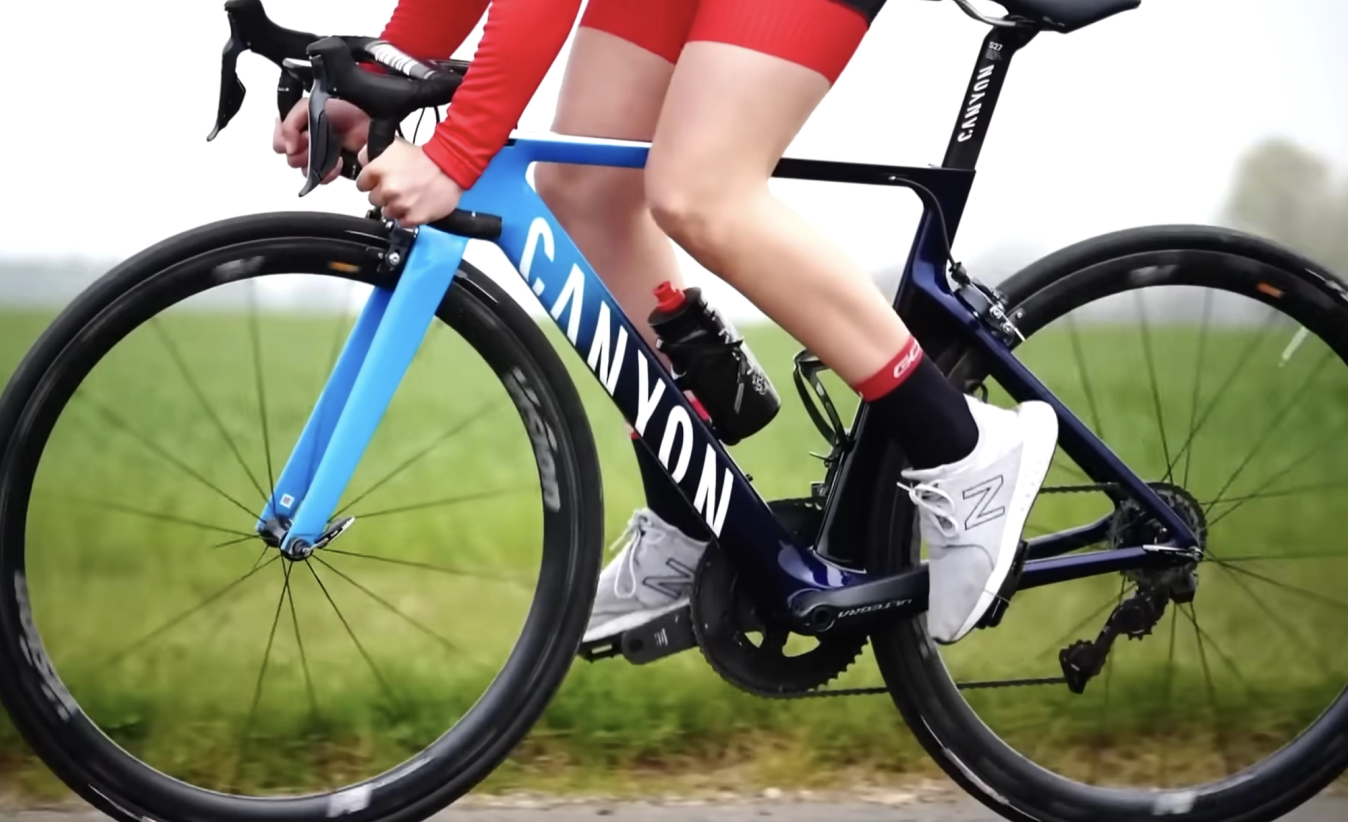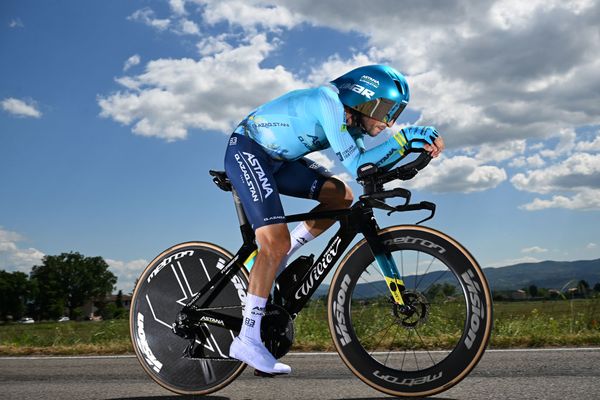Are flat pedals actually just as fast as clipless pedals?
To be taken seriously as a cyclist it seems you've got to be 'clipped in'. But is it really any faster?
James Howell-Jones
Junior Writer
Look at the feet of any reasonably serious cyclist, and you’ll see a pretty clear trend: almost everyone is riding with cycling shoes and clipless pedals – that is, their feet are attached to the pedals. For years, we’ve harped on about how clipless pedals allowed us to pull up on the pedals, unlocking more power. We’ve spoken about how clipless pedals allow you to use more of the pedal stroke. We’ve spoken about how they keep your feet planted in the most efficient position.
But is any of it actually true?
Thankfully, we’ve pitted clipless pedals and flat pedals head-to-head a number of times over the years. From all our different tests, we’ve found a few trends that tell us a few things about what’s better between the two styles. Here’s what we’ve learnt.
Read more: Road vs mountain bike pedals
In most scenarios, good quality flat pedals and stiff mountain biking shoes are just as fast as clipless pedals

© GCN
Quality flat pedals and shoes are just as good, most of the time
Every time we’ve done this test, we’ve been surprised by the results. On steady-state efforts, or anything other than a flat out sprint, flat pedals and shoes are just as fast as clipless pedals and cycling shoes.
Way back in 2014, we went to the sports science facility at the University of Bath to put clipless pedals and flat pedals to the test. On a treadmill, Si rode at 20kph on a 6% incline for 10 minutes. We measured Si’s blood lactate level, his oxygen consumption, and his heart rate for each effort, and gave him plenty of time to recover in between each of his efforts.
Although Si’s perceived effort was higher for flat pedals, his blood lactate was identical for both, his VO2 was marginally lower with the flat pedals, and his heart rate was only 5bpm higher with the flat pedals. The difference between the two was negligible.
More recently, we set out in search of some real-world results. Armed with some high-quality mountain bike pedals and shoes, and Conor’s usual clipless pedals and shoes, we wanted to find out what the difference was out on the roads.
First of all, they tackled a steep climb, with a gradient of about 12%, which took Conor just over three minutes to complete. With his clipless pedals and super stiff shoes, the climb took Conor 3:09, and he averaged 429W. Remarkably, though, on the flat pedals, he did the climb in 3:07, and used an average of only 415W. Ultimately, the discrepancy can be put down to a delayed start with the clipless pedals – Conor didn’t clip in seamlessly, so lost a bit of time and had to increase his wattage to catch up. Remember, this is a real world test, so we haven’t got laboratory levels of precision here.
Next, we sent Conor on a 5km time trial. This was a flat, fast effort, and long enough to draw out any differences between the two… or so we thought. Conor completed the course in 9:20 on his clipless pedals, averaging 371W. On the flat pedals, he completed the course in 9:22, averaging 355W. So 20W less, but only 2 seconds off the time – essentially a margin of error.
Looking at the conclusions of our two tests, it seems clear that good quality flat pedals paired with stiff shoes are just as efficient as clipless pedals with cycling shoes for normal riding.
Clipless pedals and cycling shoes allow for higher peak power and better sprinting

© GCN
For sprinting, you can't beat being clipped in
When Conor tried some maximum power efforts, the results were pretty clear. On the flat pedals, even with really good, stiff shoes, he couldn’t reach the same peak power numbers. For three seconds, he managed 1,189W on his clipless pedals and only 908W on the flat pedals. For five seconds, it was 1,154W and 906W respectively, and for 20 seconds it was 880W for clipless and 740W for flats.
This is pretty consistent with what Dan and Matt found when they set out to answer the clipless vs flats question back in 2018. For flat out sprinting, Dan found he could put out 30% more power with his clipless pedals, and Matt found he could put out 15% more power.
Poor quality flat pedals and flexible shoes are slower than clipless pedals

© GCN
Soft trainers and cheap flat pedals will slow you down
What about if you haven’t got a pair of stiff mountain biking shoes, and you’re just riding your bike wearing any old shoes, perhaps your running trainers? If that’s the case, then you will be losing some power to those squishy shoes.
Hank and Manon compared their cycling shoes and pedals to some cheap pedals and regular running trainers, and the results showed that soft, squishy shoes really detract from your power output.
On a short climb, Manon took 57 seconds with her clipless pedals, versus 1:10 on flats, and was able to put out 105W more with clipless pedals. Similarly, Hank was 13 seconds quicker with his clipless pedals, and able to put out 150W more than he could on the flats. The climb took him 54 seconds on flats, and only 41 seconds with his clipless pedals.
But what’s the difference over a longer effort? A few years ago, Hank and Chris took on the top 3km of Sa Calobra in Mallorca, comparing their clipless pedals and shoes to some flexible trainers.
Both Chris and Hank lost about 5% efficiency through their squishy trainers. For Chris, on flats, he took 9:49, and averaged 380W. On clipless pedals, he took 9:12, and averaged 409W. For Hank, on flats, he took 9:42, and used 351W. On clipless pedals, he took 9:17, and averaged 367W. So if your flat option is a less stiff pair of shoes, you will lose some time and power compared to clipless.
So why are we all riding clipless pedals?
Unless you’re sprinting, there really doesn’t seem to be any clear advantage to riding clipless. A pair of good quality, grippy flat pedals with a pair of stiff soled mountain bike shoes are just as good in every situation apart from flat out sprints. And really, how often are we doing flat out sprints as part of our riding?
Then there’s the practical considerations. Cycling shoes are a nightmare to walk in, the cleats wear out relatively quickly, and there’s a risk that if you position your cleats wrong, you’ll have knee pain.
So why don’t we do away with clipless pedals and just ride flat pedals? As far as we can tell, there’s a few different reasons.
1. ‘Locked in’ feel
Clipless pedals literally attach you to the bike. For new cyclists, that might sound scary. Really though, it feels great. You’re intimately connected to your bike, and you can get every ounce of power in the pedals. The peak power tests make it clear that clipless pedals do allow you to hit higher power numbers, and that translates to a nippy, direct feel on the bike.
2. Consistent position
Sorting your bike fit is a precise business. Every millimetre counts when adjusting saddle height, saddle setback and pedalling position. You’re not going to go through all that just to let your feet flop around on the pedals, taking whatever position they fall in when you sling a leg over. Clipless pedals allow you to set a perfect pedalling position, then stick to it. This can actually be crucial for preventing injury: your feet might not naturally fall in the ‘ideal’ position for pedalling, but with clipless pedals you can set them properly.
3. Everyone else uses them
Clipless pedals and cycling shoes are the norm on club runs and group rides, and so most cyclists would naturally assume that they’re far superior. Then there’s the peer pressure aspect. Rock up to your Sunday ride with flat pedals and chances are you’ll be on the receiving end of a few ‘helpful’ (read: patronising) remarks about how much faster you’d be with cycling shoes. It can definitely feel easier to keep your head below the parapet on this kind of thing.
Time to rethink clipless?
There are a lot of misconceptions out there about the virtues of clipless pedals, but really, a good pair of stiff shoes paired with some grippy flat pedals are just as fast as cycling shoes and clipless pedals for normal, steady riding. You will lose out on top end power, which can make your bike feel a little less connected and agile, but you’ll go the same speed on all but the shortest of sprints.
The stiffness of your shoes matters. Running trainers might seem like the natural choice for cycling, but they’re far too flexible. Stiffer shoes – ideally ones designed for mountain biking or cycling – will be better.
Speed and power aside, there is a notable difference in feel between flat pedals and clipless pedals. Clipless pedals might not be any more efficient in terms of the numbers, but they have a couple of advantages when it comes to feel and rider experience, namely that they give you a direct feeling with the pedals, and they hold your foot in exactly the right spot.
Ultimately, the question of flats or clipless isn’t as cut-and-dry as many cyclists will tell you. Deciding between the two is a matter of considering your riding style, your goals on the bike, and your personal preferences, and using your best judgement. For top end performance and a precise fit, clipless is great. For most other types of riding, flat pedals certainly won’t hold you back.

.jpg?rect=957,780,3097,3060&w=600&auto=format)








.jpg?w=600&auto=format)
